
The 6 Best Ways to Make Hash
Hash production is pretty simple when you get down to it, so here are six ways you can turn your cannabis plants into this globally renowned concentrate. A world of hashish awaits!
Hash, also known as hashish, is one of the oldest and most widely used forms of cannabis concentrate. Its popularity stems from its high potency and easy production, with pretty much everyone being able to make it themselves. So, we thought we would put together a guide on the finer details of hash and six different ways you can make it yourself.
How is good hash made?
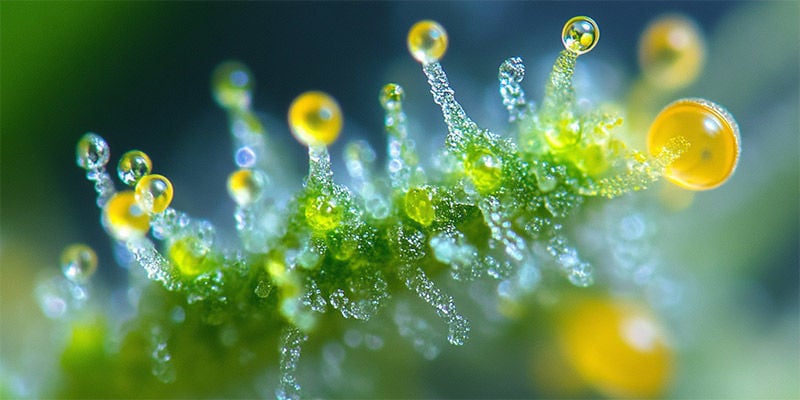
As mentioned, hash is a form of cannabis concentrate. It is made up of the cannabis plant's trichomes—the tiny hair-like glands that produce and hold the great majority of the plant's cannabinoids and terpenes. While entire plants, including fan leaves and leftover trim, can be used to produce hashish, the strongest forms of hash are collected from buds and bud trim, such as sugar leaves.
Although the buds have the greatest concentration of trichomes, we can only make hash if we first separate those trichomes from the raw plant material. When trichomes break away from the plant, you get the core ingredient of hash—kief. If you've ever noticed an incredibly fine, sugary-like substance collecting in your grinder, that's kief, which has broken away from the ground buds.
However, the method you use to obtain your kief can greatly affect the quality of your hash, causing profound and subtle differences. This is why there are many "different" methods of producing hash, as the method you use defines the type of hash you get.
Turning kief into hash
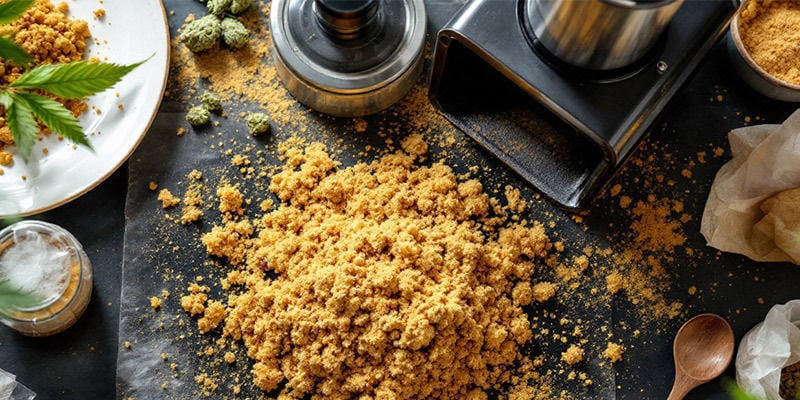
When you separate trichomes from the plant, you still need to turn the kief into hash. There are two ways to do this. The first is with pressure, using something like a pollen press. This allows you to place your kief in the press, apply high pressure, and meld it into a pellet.
Although this does change its state of being, without heat, the hash is not technically “hash” until the kief has undergone both heat and pressure treatment. Doing so causes the trichomes to break down fully and meld—affecting consistency, flavour, and effect.
The simplest method is to wrap your brick or pellet of kief inside a layer of food-safe cellophane and wet newspaper before placing it in the oven. The cellophane will ensure that the kief remains dry, while the damp paper will stop anything from burning, allowing the kief to soften and meld together. After ten minutes at 175°C, the parcel is removed from the oven and placed on a hard surface. Large amounts of even pressure are then applied to the package using a rolling pin.
6 best ways to make hash
The good news is you don't need to travel the world to learn how to make hash. In fact, there are several ways you can make hash from the comfort of your own home, and we've got step-by-step instructions for six different methods outlined below.
The hand-rolling (charas) method
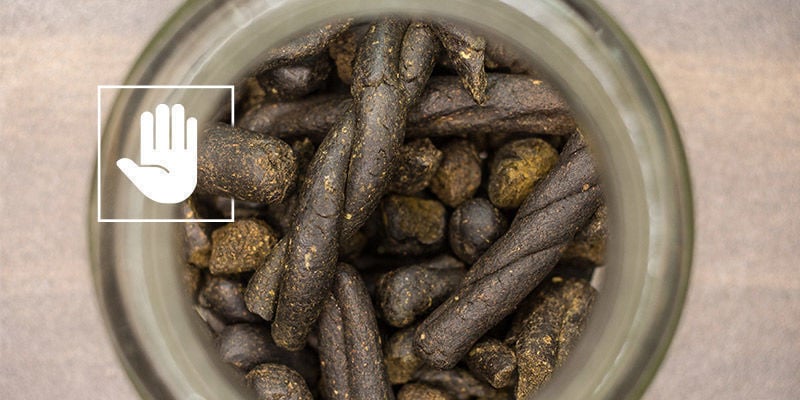
This is the most basic way to produce hash. Basically, as you handle the weed, trichomes and resin stick to the skin. As the resin can be pretty gunky, finger hash is produced by rubbing your hands or fingers together when they have this coating. The pressure of rubbing your fingers together, combined with the body heat of your hands, produces a low-grade form of hash.
Remember that all of the dirt, sweat, and oil on your hands will also be pressed into it, which is why it is considered one of the lowest-quality hash variants.
Equipment
Directions
- Finger hash is often created as a byproduct of harvesting your cannabis plants or handling large amounts of weed. However, removing sticky resin from your hands is a nightmare, so we'll use rubber gloves instead to make life easier.
- To start, a large amount of excess trim or foliage is ideal. You don't really want to waste precious buds on hand-rolled hash.
- Wearing the rubber gloves, start rubbing the plant material between your palms. As you roll the trim and fan leaves between your hands, the trichomes will transfer to the surface of the gloves, leaving behind an incredibly sticky residue.
- As the resin builds, try rolling it into small balls. There might not be much, but don't worry—we're also going to put the gloves in the freezer.
- After placing your hand-rolled balls of hash in an airtight container, carefully remove the rubber gloves and freeze them overnight. Once the resin has frozen, you should be able to easily peel it away from the rubber, giving you even more hash to play with.
The shoe method
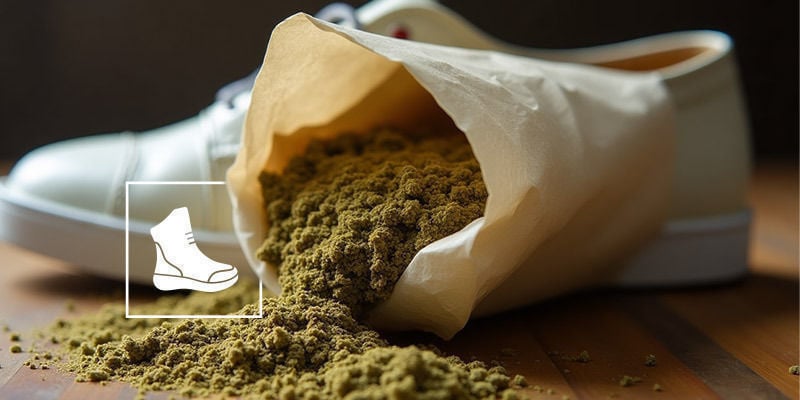
While it may seem unconventional, you can actually use your shoe to produce hash. And best of all, it saves you from buying a pollen press.
Equipment
- Sticky tape
- Parchment paper
- Pin
Directions
- Start by carefully placing your kief inside the parchment paper. Fold over the edges and tape it down so the kief does not spill out.
- Prick the package with the pin so that any trapped air can escape. Otherwise, when you compress the kief inside, the air will prevent you from applying the necessary pressure.
- Place the package inside the heel of your shoe (heavy-duty footwear works best). As you walk around, the weight and heat from your body will help transform the kief into hash. Keep walking until all the kief is compressed (usually 15–60 minutes).
The silk screen/dry-sifting method
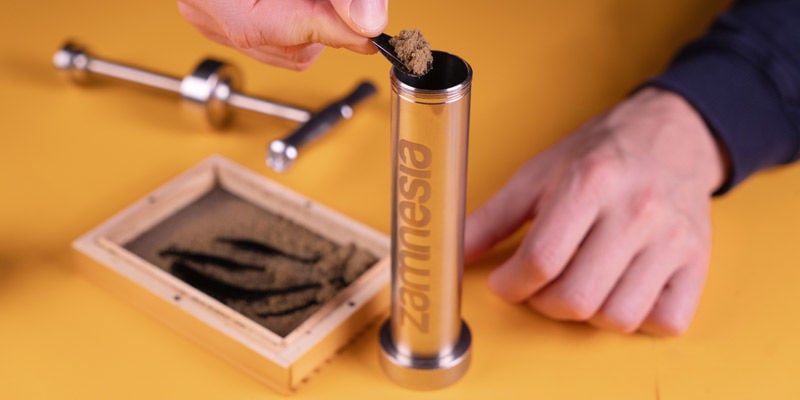
This method involves sieving your cannabis plant matter through a silk screen. Ground-up trim is placed on the silk screen and gently agitated to break off the trichomes and allow them to fall onto the surface below. By using a series of successively finer silk screens, it is possible to refine the purity and quality of your hash.
Equipment
- Wooden sifter box
- Small scraper
- Small funnel
- Trimming shears
- Pollen press
Directions
- Open your sifter and place your buds or ground-up trim inside. The smaller the sections of plant material, the better, so use the trimming shears if needed.
- Close the lid and shake the sifter box vigorously for several minutes. While this will naturally displace some of the trichomes, we still have more work to do.
- Using the small scraper, "card over" your buds, pushing them into the screen inside the sifter box. Don't worry, though. The screen is fine enough that large bits of plant material won't pass through. It will, however, start collecting the kief in the compartment beneath the screen.
- Once you've carded the buds for several minutes, redistribute them evenly within the sifter box and restart the process from step 2. The idea is to shake, card, and rub your buds (several times) until every last trichome breaks away.
- In the bottom section of the sifter, you'll have an impressive collection of kief ready and waiting. Scrape it out before placing it into a pollen press using the small funnel. Alternatively, if your sifter has a selection of graded screens, repeat the process with each one until you get the kief consistency you desire.
The blender method
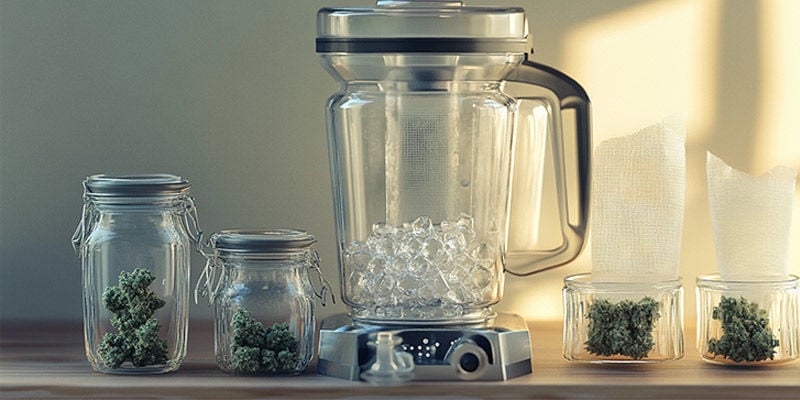
This method relies on the fact that trichomes will sink in water. Cannabis trim, water, and ice are put into a blender—ice because the colder trichomes are, the easier they are to separate from the plant matter. When you switch the blender on, the force of the motion and the collisions caused by everything bashing together separates the trichomes from the plant matter, allowing them to sink to the bottom.
Equipment
- Blender
- Ice cubes
- Fine-mesh sieve
- 2x glass jars
- Coffee filter paper
- Elastic bands
Directions
- Add your trim or buds and some cold water (filling halfway or enough to submerge the buds fully) to the blender. Finally, throw in a handful of ice cubes to lower the temperature further.
- Blend for fifteen seconds at the lowest speed possible. We want to try to "knock" the trichomes off of the plant material, not totally eviscerate the buds. Wait for the buds to settle at the bottom of the blender before moving to step 3.
- Place the fine-mesh sieve atop one of the glass jars and pour in the blended mixture. The sieve will collect any rogue plant material, while the trichomes will easily pass through undisturbed. Leave the mixture to sit in the glass jar for 30–60 minutes.
- Remove roughly ⅔ of the water, being careful not to disturb the trichomes at the bottom of the jar. With the excess water removed, move the jar to the freezer and leave for ten minutes.
- Lastly, place the coffee filter paper over the second glass jar and secure it with an elastic band. When you pour your mixture from the freezer, the paper should collect all the trichomes to form kief. All you have to do is let it dry before pressing it into hash.
The mechanical drum method
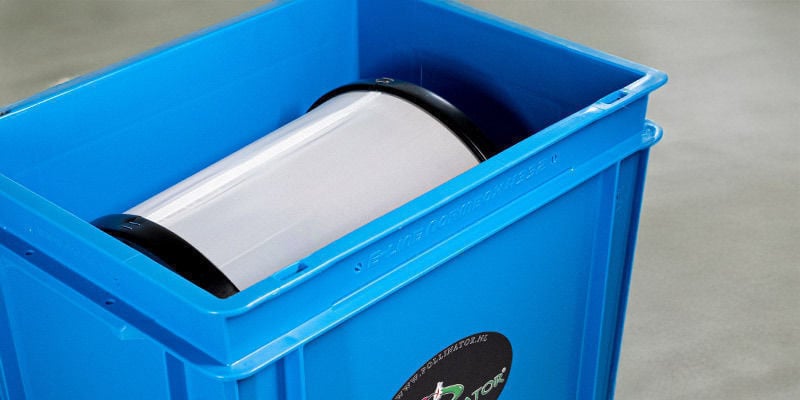
The mechanical drum method is ideal for those interested in an easy ride. A mechanical drum performs the same job as the silk screen method. Still, it is completely automated, making it easier to process larger amounts.
Equipment
Directions
- Before placing your buds or trim inside the Pollinator, you'll need to carefully remove any stems, as these may damage the screens inside the device.
- Once you're happy with your material, place it in a freezer inside an airtight bag for two hours. The freezing temperatures make it easier to remove the trichomes during the turning phase.
- Next, open the Pollinator and remove the drum, first lifting it from the motor side and then the opposite end.
- Remove the magnetic screen from the drum and place your plant material inside. Replace the screen and put the drum inside the Pollinator (reversing the instructions above).
- Turn on the Pollinator P150 and let it run for approximately 2–5 minutes. When you remove the drum the second time, you'll notice a fine collection of kief at the bottom of the Pollinator. Either remove or rerun the Pollinator to keep producing kief.
The dry ice (bubble hash) method
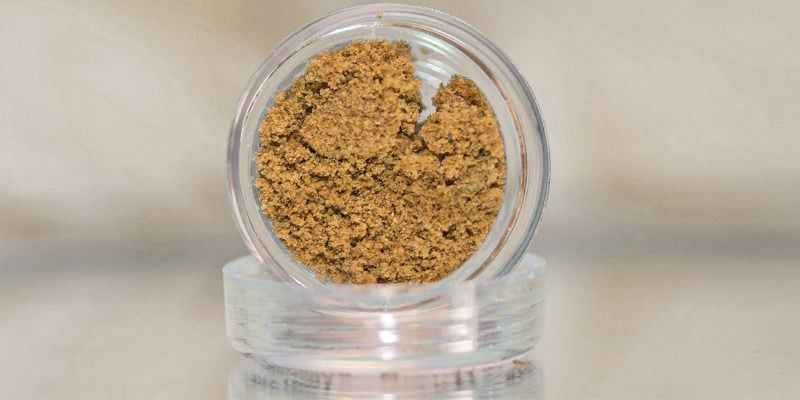
Hash produced using this extraction method is largely considered the best. Still, it is also the most time-consuming and requires the most equipment (unless you opt for the Bubbleator B-Quick). Regardless, if you've got the time and the motivation, the flavour and potency of bubble hash are incredible.
Equipment
- 2x large buckets
- Small paddle (for stirring)
- Mesh micron bags
- Ice cubes
- Small scraper
- Parchment paper
Directions
- Like with the blender method, you'll want to add water, ice cubes, and cannabis flower or trim to one of the large buckets. Using the paddle, gently stir the mixture for fifteen minutes.
- Next, prepare the second bucket using the collection of mesh micron bags. Place them inside one another according to the grading, securing them to the outer edge of the second bucket.
- With both buckets ready, pour the first bucket (with the water, ice, and buds) into the second, allowing the mixture to flow into the micron bags. After gently pouring the entire first bucket, leave the mixture sitting inside the mesh bags to rest for another fifteen minutes.
- As you carefully remove the micron bags, you should notice the various collections of plant material and kief. Each bag is a different grade, getting finer and finer. The innermost bag will likely contain large chunks of plant material, but as you remove each bag, the kief becomes increasingly refined.
- Scrape the kief from each micron bag and allow it to dry on separate sheets of parchment paper (avoiding direct sunlight). All bags should contain usable material, but each will have a different consistency, potency, and flavour, so it's best not to mix them. It just means you have more hash to experiment with!
The best cannabis strain for making hash
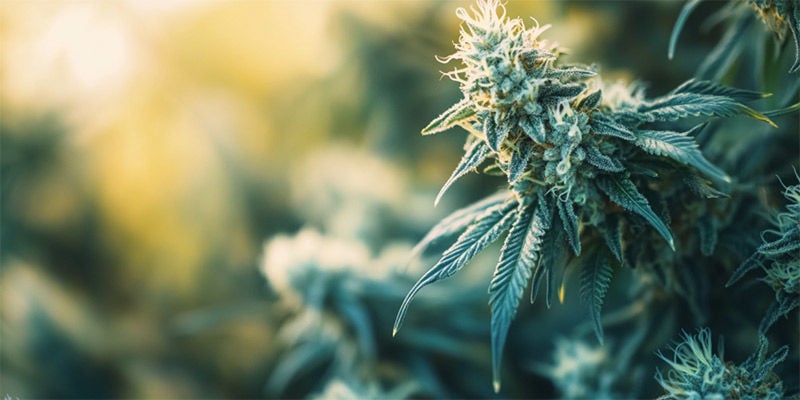
Normally, guides like this one list several strains perfect for making hash. In reality, all weed is good for making hash. However, if you want to improve the efficiency of converting cannabis flower and trim to kief, then it helps to start with strains known for their resin production. Remember, as a general rule of thumb, ten grams of flower produces roughly one gram of hash. Hence, picking strains based on how much resin they produce is crucial if you don't want to sacrifice a load of buds.
The greater the level of resin on the buds, the greater the concentration of trichomes that can then be agitated and removed to create hash. Given the prevalence of hash in countries such as Afghanistan, Morocco, and Pakistan, it will likely come as no surprise that strains synonymous with these regions make excellent candidates for hash-making.
How do you like your hash in the morning?
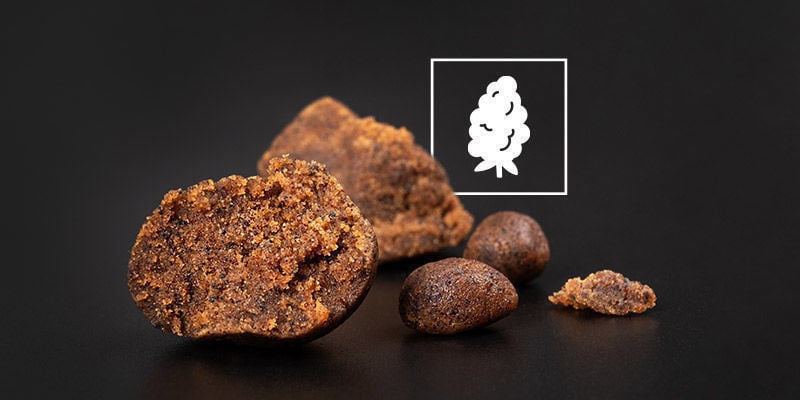
Hash is by far one of the oldest and most commonly used cannabis concentrates in the world. Now, with the help of the guides above, you can master hash-making, creating several different forms whether you're using flower or trim. With great potency and dank flavours on offer, there's an entire world of hash to fall in love with.
-
 4 min
22 February 2024
Kief: What It Is And How To Make It
Kief is easy to collect and great to smoke. Perhaps the simplest of all cannabis concentrates, all you need to collect it is the right grinder! Read on to find out how to secure a steady supply of...
4 min
22 February 2024
Kief: What It Is And How To Make It
Kief is easy to collect and great to smoke. Perhaps the simplest of all cannabis concentrates, all you need to collect it is the right grinder! Read on to find out how to secure a steady supply of...
-
 7 min
31 March 2022
How To Make Bubble Hash (3 Methods)
Bubble hash is a potent cannabis concentrate. Luckily, there are some easy methods you can use to make it at home with supplies you can find in most kitchens. Now you can enjoy hash without...
7 min
31 March 2022
How To Make Bubble Hash (3 Methods)
Bubble hash is a potent cannabis concentrate. Luckily, there are some easy methods you can use to make it at home with supplies you can find in most kitchens. Now you can enjoy hash without...
-
 5 min
31 December 2021
Step-By-Step Guide To Making Dry Sift Hash At Home
There are various types of hash, and numerous ways to make it. Dry sifting is a particularly easy method for making potent, high-quality hash at home. Read on to learn how to do it in our...
5 min
31 December 2021
Step-By-Step Guide To Making Dry Sift Hash At Home
There are various types of hash, and numerous ways to make it. Dry sifting is a particularly easy method for making potent, high-quality hash at home. Read on to learn how to do it in our...
-
 3 min
7 May 2019
Rosin Hash: Easy, Safe and Potent
Rosin Hash is one of the newest cannabis concentrate to hit the community, and there is a lot to like about it. Rosin Hash is can be seen as the new BHO, except unlike BHO, it is easy, safe, and...
3 min
7 May 2019
Rosin Hash: Easy, Safe and Potent
Rosin Hash is one of the newest cannabis concentrate to hit the community, and there is a lot to like about it. Rosin Hash is can be seen as the new BHO, except unlike BHO, it is easy, safe, and...














 United States
United States










